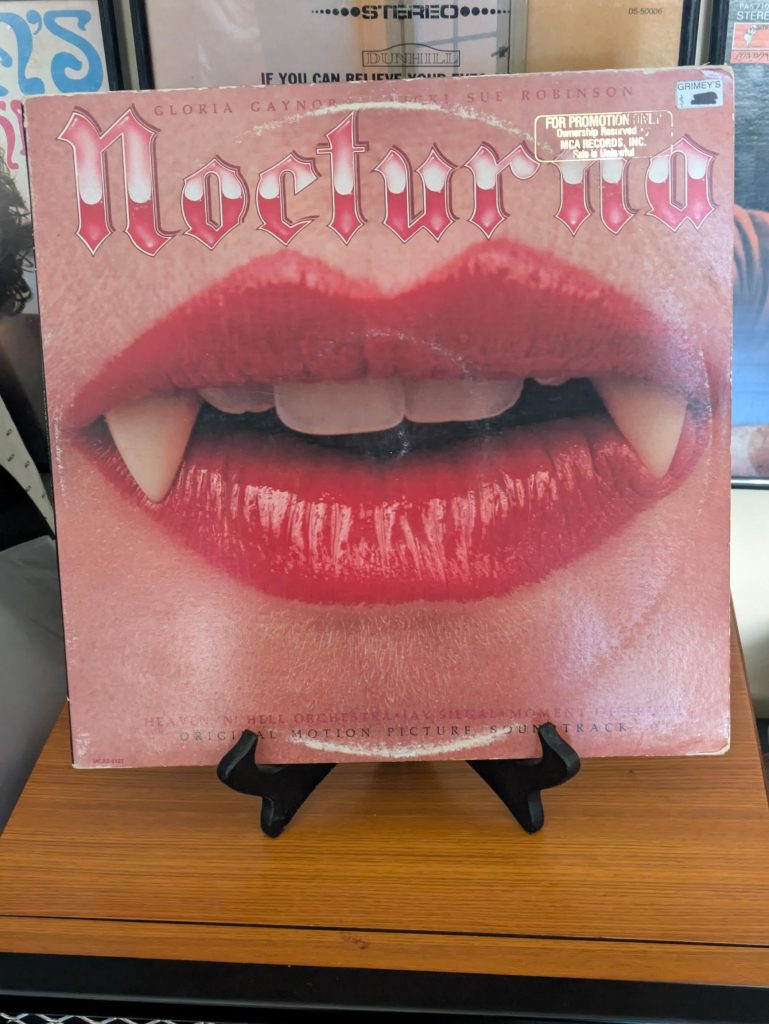
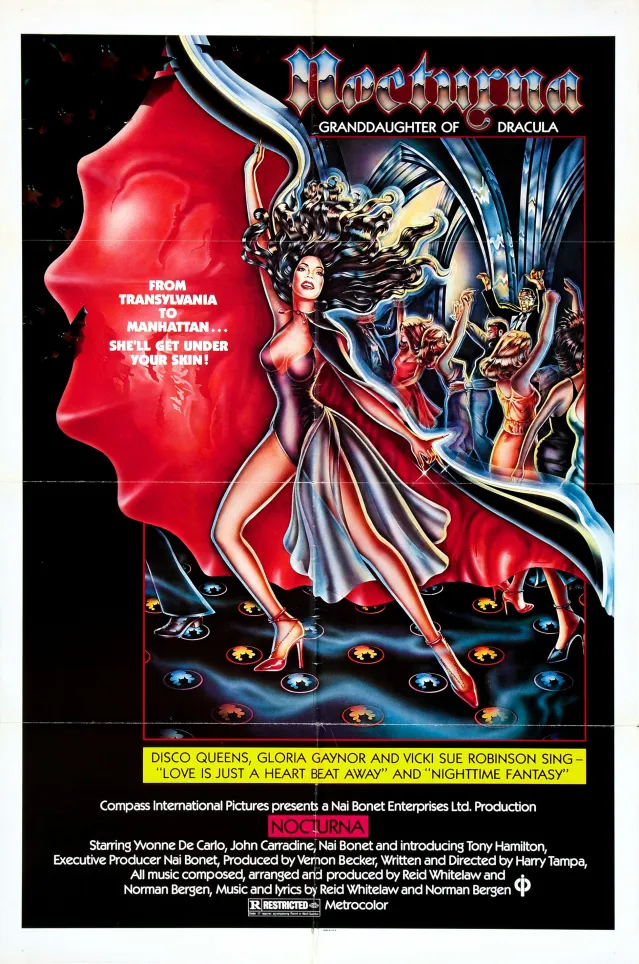
“Listen to them—the children of the night. What music they make!”
When Bela Lugosi uttered this famous line in 1931, it was enough to chill the blood of movie audiences worldwide. In his iconic performance as Dracula, his “music of the night” was the sounds of howling wolves from the Transylvania countryside, barking at the blood moon with their warning of the evil that lurked within the walls of the ominous gothic castle. But fast forward a little less than fifty years later and there was a much different sound penetrating the walls of Castle Dracula. In 1979 the music of the night was being made by…. Gloria Gaynor? Suddenly the blood moon had been replaced by a mirror ball, the torture chamber had become a dance floor, and the wolves had been drowned out by a pulsating dance beat. Hold on to your throats and bare your necks because things are going to get real funky! Get ready to boogie down, Halloween style, with the scrumptious Nocturna, Granddaughter of Dracula, who invites you to get down with the ghouls in a luxurious night of chills, thrills and romance that won’t end until the sun comes up!
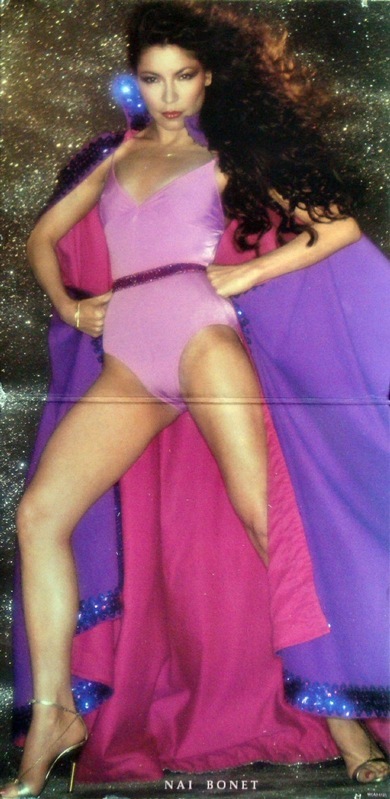
Well, that might actually be hyping the Nocturna experience a bit too much. Will there be thrills? Not really. Chills? Barely. Romance? I guess. But don’t let the gothic looking album cover featuring a pair of sensuous lips with pointy vampire fangs fool you. There isn’t anything spooky on this film soundtrack. You aren’t going to get the spinechilling musical experience you would from Goblin’s “Suspiria,” or Mike Oldfield’s “Tubular Bells.” You won’t get any psychedelic grunts or groans by The Vampire’s Sound Inc, or the gothic whimsy of Tim Burton. Instead, the “Nocturna” lp is wearing a convincing Halloween costume, being a Disco album disguised as a horror soundtrack. Drop the needle on this double album set and you are going to discover a pretty solid Disco soundtrack that can hold its own alongside “Saturday Night Fever,” Xanadu,” and “Thank God it’s Friday.” A rare, overlooked gem from the final days of Disco, like the film itself, the album deserves to be rediscovered.
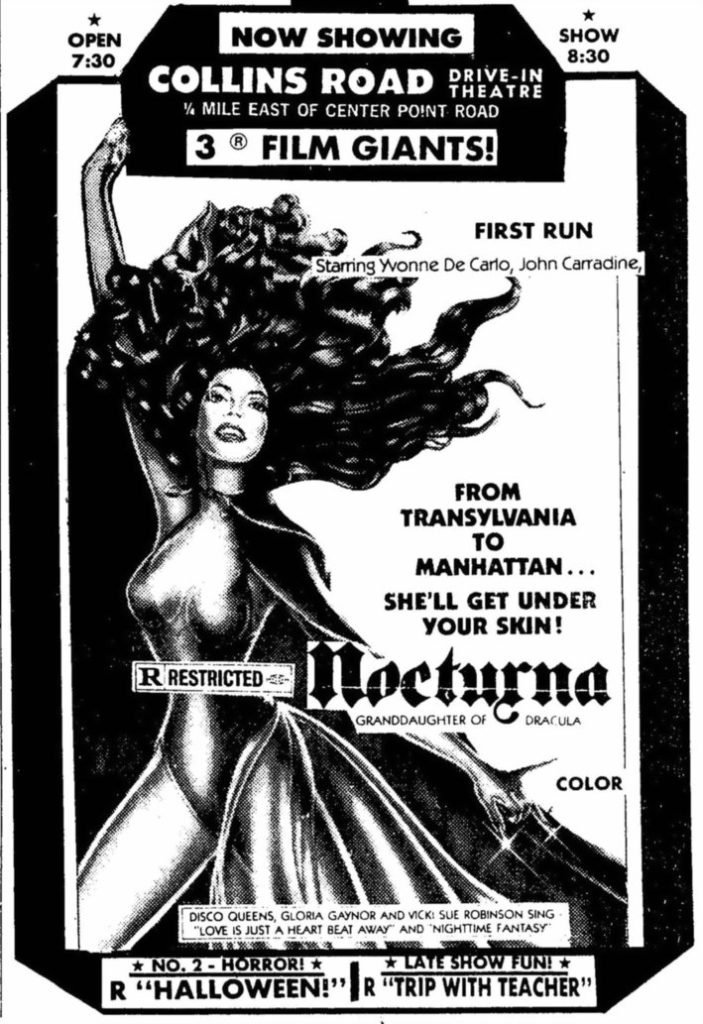
So why haven’t you heard of “Nocturna, Granddaughter of Dracula” before? I was wondering that myself earlier this year when I first saw the stunning poster art for the movie on social media. I love horror films, I love 70’s culture, I love strange B-movies and, for better or for worse, I love Disco movies. You think I’d be all over something like this! Well, cult status has seemed to have passed “Nocturna” over and, instead, it remains to be a forgotten film oddity that received little attention when it was first released and has been abandoned and ignored ever since. An odd and often misguided film, “Nocturna” dared to mix the opposing genres of Disco and horror movies with a sprinkle of comedy, a bit of sexiness, a shit ton of glitter and a lot of ambition in a film that is equal parts dreadful and delightful. But while the film’s watchability can be debated, the soundtrack album is undeniable Disco gold!
When researching “Nocturna” I am disheartened when I find reviews calling it “the worst vampire movie ever made,” and some people warning potential viewers to “never watch this movie.” There is no doubt that the film is awful. To be completely honest, it is possibly one of the most superficial films I’ve ever sat through. But the worst? Oh dear, no it is not. I have seen some far worse vampire films in my time (cough….”Twilight”….cough cough). Despite its many glaring faults, I instantly fell in love this movie upon my first viewing of it. In fact, I loved it so much that I tracked down and bought an original poster from the film, which now hangs in our front entrance ways to greet visitors when they enter our home.
But before we look at this strange movie and the music that it inspired, let me introduce you to Nocturna herself, actress/producer/belly dancer/visionary Nai Bonet.
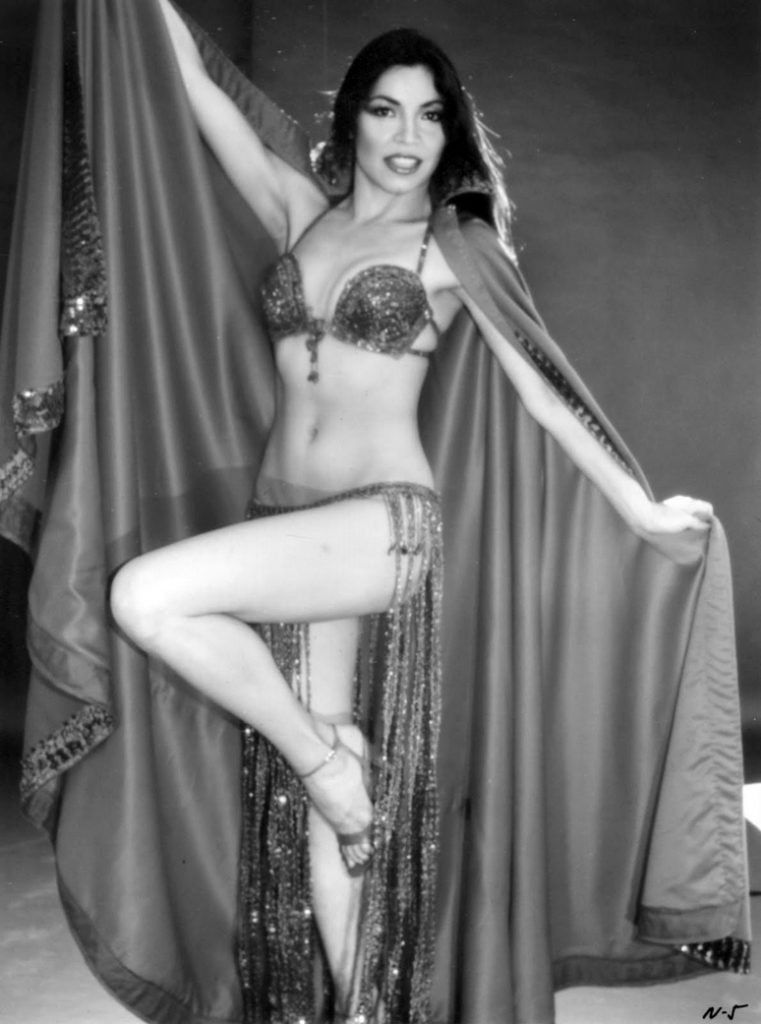
Making her show business career at age 13 at the Flamingo Hotel in Las Vegas around 1957, Nai Bonet was probably far too young to be working as an erotic dancer. But it was a different time back then, and with her exotic beauty and an air of mystery to her, Nai Bonet became one of the leading stars of the incredibly niche world of belly dancing. Originally from Saigon, Nai was the daughter of a Vietnamese mother and a French father, but her family made their way to New York and eventually settled in Yonkers. While Nai would eventually make it to Hollywood, New York City would prove to be her primary base of operations throughout her life.
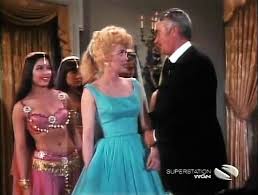
- In 1965, Nai Bonet made her television debut on an episode of “The Beverly Hillbillies” in the role of “second harem girl,” and appeared in forgotten films such as “Diary of a Bachelor,” “The Spy with a Cold Nose” and “John Goldfarb, Please Come Home” in such roles as “specialty dancer” and “belly dancer.” She’d get some bigger roles in the years to come in cult favorites such as the biker film “Devil’s Angels,” bizarre low budget drama “The Soul Hustler.” Muhummad Ali’s starring vehicle “The Greatest” and a Grimm Brother’s inspired soft porn called “Fairy Tales.”
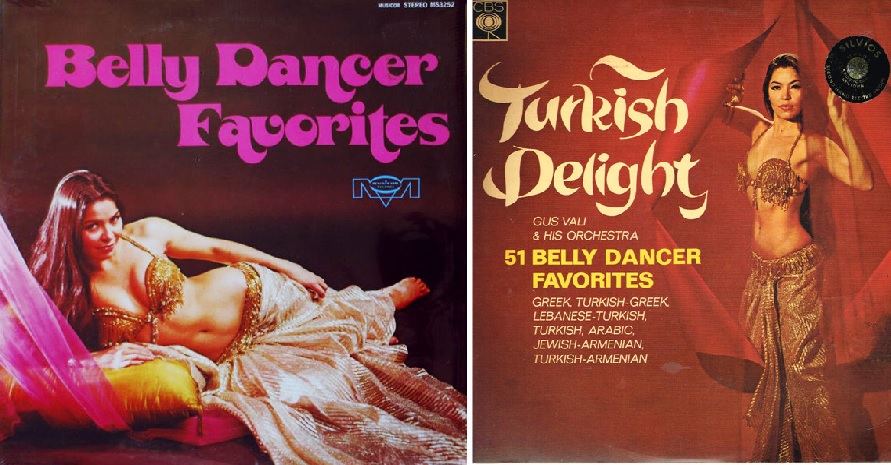
Meanwhile, if you kept your eyes open you might have seen Nai Bonet in your local record shop. Nai was the cover model to a pair of albums by Gus Vali and his Orchestra, 1968’s “Turkish Delight” (1968) and “Belly Dancer Favorites” (1972). Not exactly top hits of their time, the covers to these albums, if stores bothered to stock them, would have caught a few eyes and maybe even a couple of hearts when placed in the easy listening sections amongst the James Last and Terrante and Teicher albums. Although not the kind of thing I’d ever be tempted to buy, if I ever see these records while crate diving, I’ll be buying them for the Nai Bonet covers alone. They are now solidly on my radar.
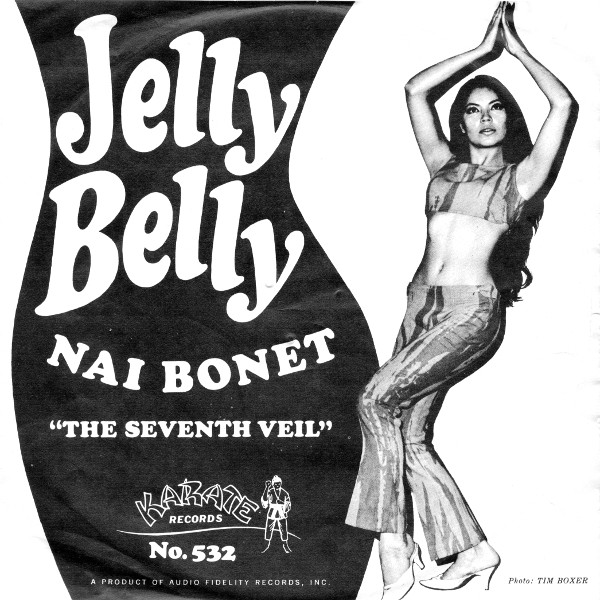
In 1966 Nai even released her own novelty single titled “Jelly Belly.” Produced by a New York based independent label called Karate Records, “Jelly Belly” featured a mixture of Arabian flavoured music with a girl group sound, and had Nai instructing the audience in the art of belly dancing:
“First you inhale
Then you exhale
Hips go up, and now tum goes round and round
Shoulders shake, everything is quivering,
(Do it)
Anybody can do it
Anybody can try it
Anybody can do it
Jelly belly, jelly belly
Hey, yeah
Jelly belly, jelly belly”
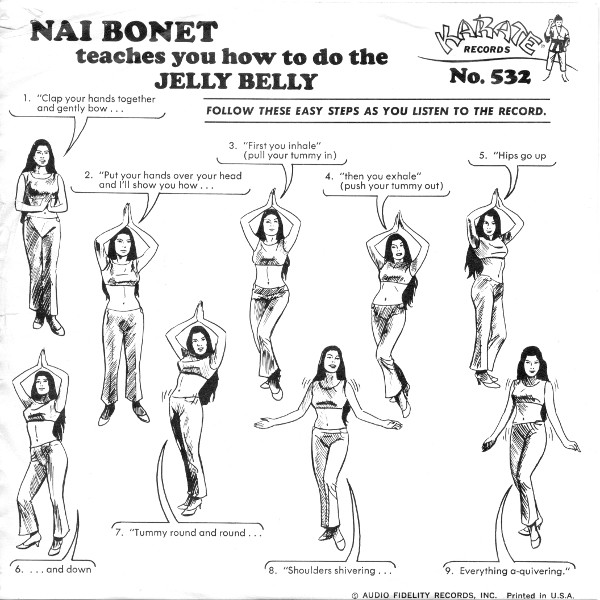
While the song, nor the dance, caught on with the American public, a fun video featuring Nai Bonet in her prime, albeit filled with cringy cultural appropriation, was filmed for Scopitone machines. The release also had a nice picture sleeve, including pictorial instructions featuring Nai demonstrating how to belly dance on the reverse side. This single proves to be a very rare record, with only three copies currently for sale at Discogs which are all going for exorbitant prices. I’d love to own a copy, but even I’m not crazy enough to be paying $600 CND for a novelty 45 rpm.
But, by 1978, Nai Bonet was frustrated with the state of her career. In a fourteen-year period, Nai had only managed to book fifteen screen credits. To say the least, her film career wasn’t really taking off.
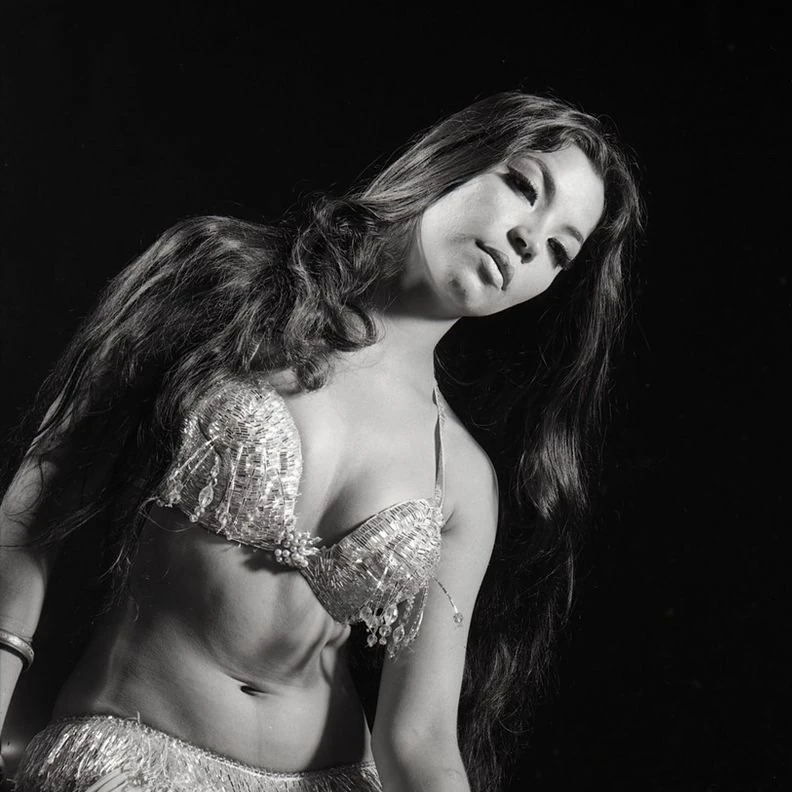
In an interview given in conjunction with the release of “Nocturna,” Nai revealed that she believed her lack of success with being cast in starring roles was due to her ethnicity, and that all the plush roles were going to more traditional looking sex symbols, such as Briget Bardot, Jane Fonda and Raquel Welch. Another unfortunate reality of being a woman in showbusiness was that Nai knew she was on the cusp of “aging out.” Although she could pass for looking a decade younger than she actually was, Nai was turning 35 years old, and in the world of Hollywood, if a woman hadn’t made it in their 20’s the likelihood of a successful film career was greatly reduced. It’s a hard fact, but unfortunately one that is still true today.
Looking to jumpstart her quickly fading career, Nai Bonet decided instead of waiting for opportunities to come to her, she’d make her own opportunities for herself. With a notebook full of ideas and a ton of expectations, Nai formed her own film company, Nai Bonet Enterprises, and decided she would produce starring vehicles for herself! Amongst her many ideas, Nai had concocted a barebones story about a disco dancing vampire, and contacted director Harry Hurwitz, who directed the fairy tale soft porn that she was in, and convinced him to come work for her. Next Nai sealed financing for her film (rumoured to be supplied by Irwin Yablans, who a year earlier had produced John Carpenter’s horror classic “Halloween”). With an idea, a director and a financer, Nai Bonet was now in the movie making business!
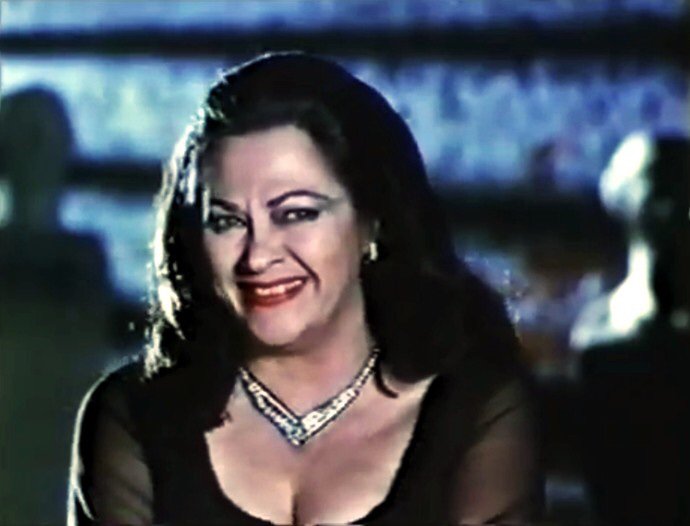
But possibly the most promising part of Nai’s production was when she managed to find a pair of genuine horror icons to co-star in the film with her. In the role of the matronly vampire Jugulia Vein was actress Yvonne DeCarlo, who endeared herself to a generation of horror fans as Lily Munster in the 1960’s sitcom “The Munsters.”
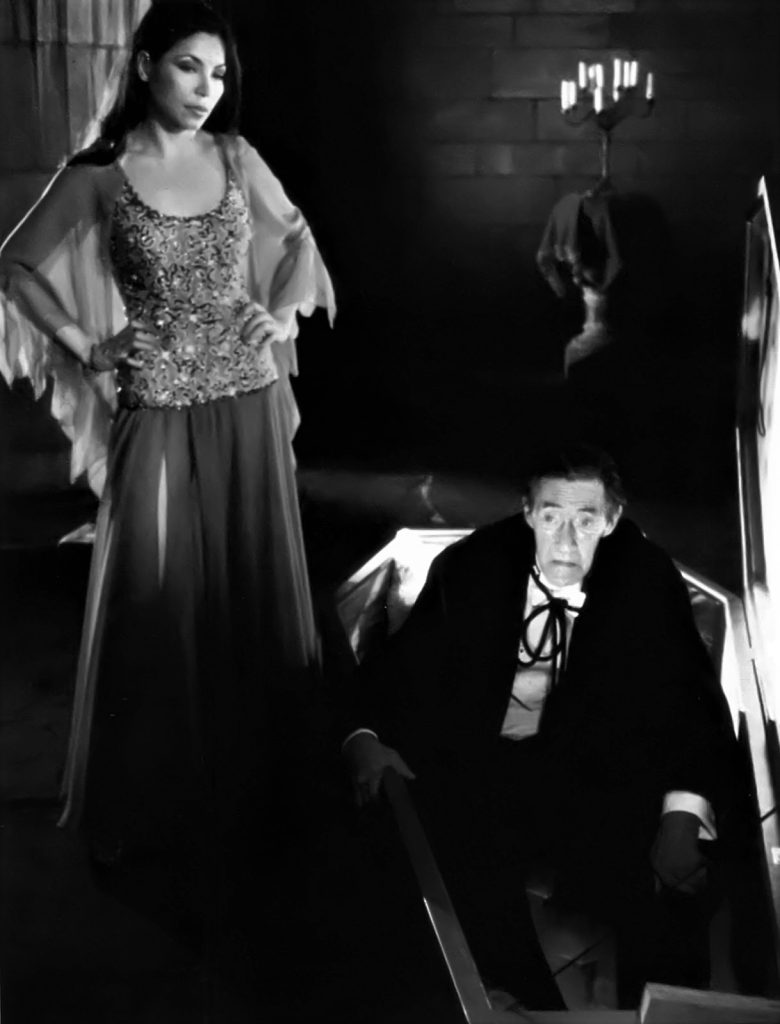
But, even more important to the production was securing actor John Carradine in the role of Count Dracula himself. It was rumoured that Carradine even supplied his own costume, which was the same he had worn in the role of Dracula in the classic Universal films “House of Frankenstein” (1944) and “House of Dracula” (1946). An actor familuar with the role, this would be Caradine’s fourth time playing Count Dracula (the last time had been 1966’s stinker “Billy the Kidd Vesus Dracul.”) Although Carradine, at age 73, had seen much better days, his presence in the project gave “Nocturna” the added sense of legitimacy that it needed.
Filming for “Nocturna” took place in the summer of 1978 with a boatload of ambition, style and energy. However, with a razor thin plot, zero-character development, a limp climax and nearly no drama, “Nocturna” proved to noticeably insipid. Unfortunately for the production, despite her magnetic on camera presence, a thespian Nai Bonet was not. While the camera seemed to love her at times, watching her recite even lines she wrote herself was painful. But what she lacked in acting, she made up for it when dancing! Whoa nelly! When Nocturna does her thing, be it in the shadowy halls of Castle Dracula, or on the pulsating glowing New York dance floors, Nai Bonet gives it her all, and she is exhilarating to watch!
But in order to dance, Nocturna needed some music, and this is where the project actually delivers.
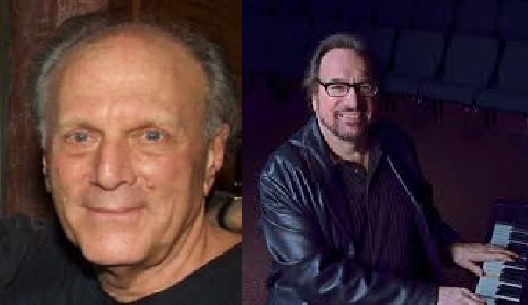
All of the original music for “Nocturna” was written, produced and arranged by the songwriting team of Reid Whitelaw and Norman Bergen. Whitelaw’s biggest claim to fame had been composing the bubble-gum hit “Goody Goody Gumdrops,” which was a top 40 hit for the 1910 Fruitgum Company in 1968, and had written songs for Rick Nelson, Jay and the Americans and Meatloaf. Bergen, on the other hand, primarily worked as an arranger, working with early doo-wop sensations The Tokens, and later for Tony Orlando and Dawn on their biggest hits. Coming together in 1975, they had their first unlikely success as a team when they produced an album for teen actor Ralph Carter, best remembered for playing Michael Evans on “Good Times,” which actually had two singles land on the Billboard R&B chart,
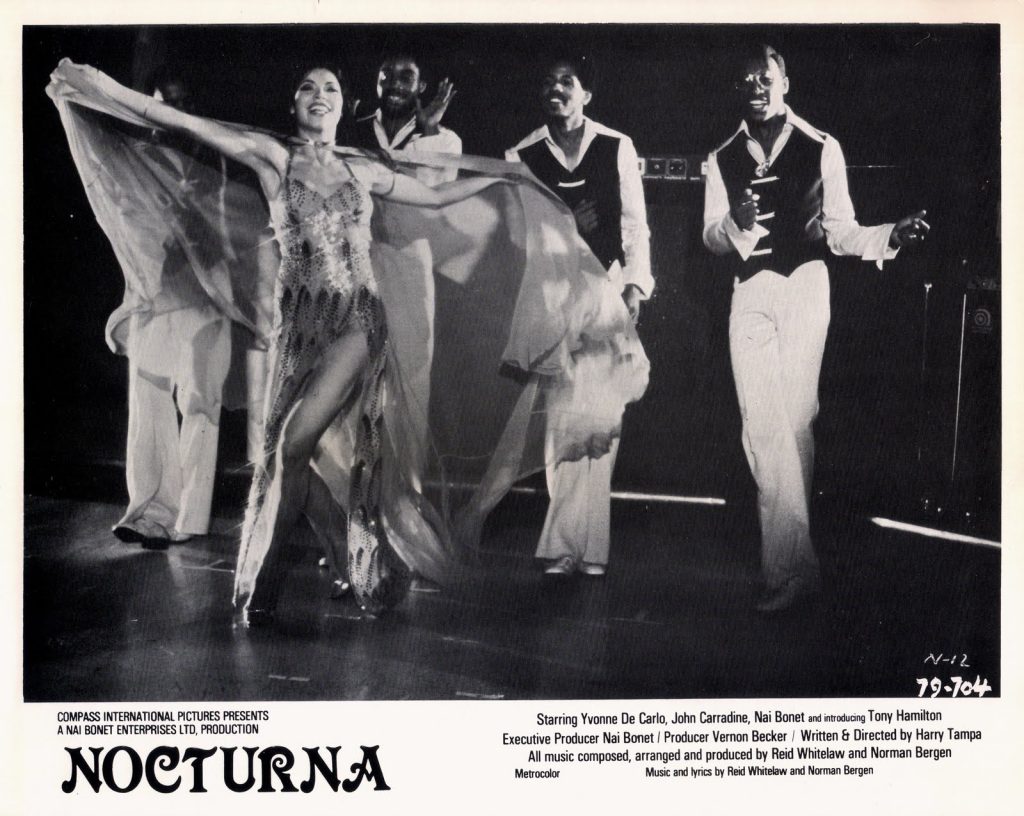
Not long after, Whitelaw and Bergen formed a group they called Moment of Truth, which was created solely for the purpose of recording their own material. After a few missteps, including releasing a debut album after the first version of the band broke up, a permanent lineup for Moment of Truth was formed featuring John Maurice, Carl Smitty Smooch, Norris Harris and Ivory “Caprice” Bell, who went on to release fourteen singles between 1977 and 1979. Although none of the tracks hit the Billboard Charts, the band had a solid sound and were popular in the New York club scene. So, obviously, when Whitelaw and Bergen were recruited to put together the music for “Nocturna,” they brought Moment of Truth along with them, who not only recorded a pair of songs for the film, “Love at First Sight” and “I’m Hopelessly Devoted to You,” but also appeared in the movie as themselves Although they seemed a little bit out of place performing at Dracula’s castle, their appearance would be one of the only times that this dynamic group would be captured on film. Soon after “Nocturna,” Moment of Truth broke up without ever becoming the Disco legends that they were meant to be. Thankfully “Nocturna” captured them on film, so they didn’t become completely forgotten.
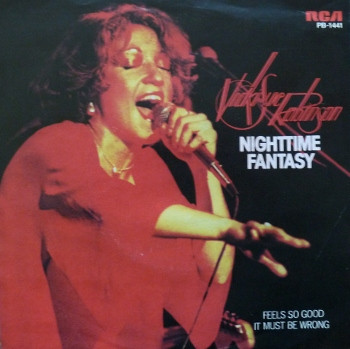
But the “Nocturna” soundtrack wasn’t without some superstars of the era. Disco diva Vicki Sue Robertson, who had a massive hit in 1976 with “Turn the Beat Around” (which is, incidentally, probably my favorite Disco single ever recorded) was recruited to record “Nighttime Fantasy.” Another solid dance single, Robinson even faked an orgasm for the single, emulating Donna Summer’s brow raising stunt that made her 1975 hit “Love to Love You” a sensation. As an added bonus, also appearing on “Nighttime Fantasy” was future Billboard chart topper Irene Cara, who performed backup vocals on the track. Robinson’s experience on “Nocturna” would prove to be enjoyable, and she’d continue working with both Whitelaw and Bergen and Nai Bonet again.
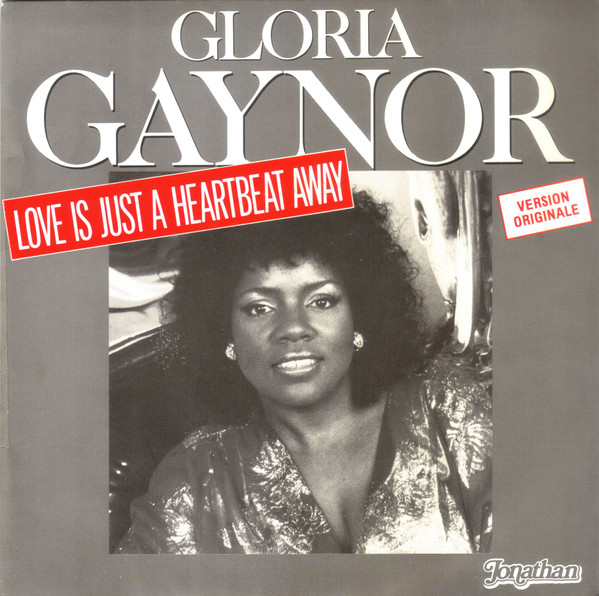
But “Nocturna” needed an anthem, and who better than the Queen of Disco herself, Gloria Gaynor, to make that happen! Nocturna’s theme, “Love is Just a Heartbeat Away,” would become a surprise hit for Gaynor, becoming a staple at clubs and discos for decades to come. But while it was a strong release for her, in a 2015 interview with Discobaby.com, in conjunction of the remixed and released version of “Love Is Just a Heartbeat Away,” Gloria Gaynor revealed she did not like the number, stating “I thought ‘Love Is Just A Heartbeat Away’ was a corny title to begin with, and the arrangement of the original was already badly dated when I did it. And the lyrics were dreadful; I would never in real life present words like that to anyone. In fact, I only agreed to sing it out of courtesy to my then manager who also happened to be my husband.” I tried to find out what sort of hold that Whitelaw and Bergen had on Gaynor’s then manager/husband Linwood Simon to have him convince her to record the song, but that remains a mystery probably lost to time.
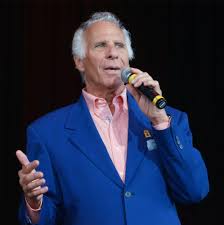
“Nocturna” had one additional track worth noting – a love ballad titled ‘Why Do Lovers Come Together.” The musical backdrop to “Nocturna’s” anti-climatic finale, the song was recorded by Norman Bergen’s friend and colleague Jay Seigel, who most famously performed the falsetto lead vocal for The Tokens’ biggest hit, “The Lion Sleeps Tonight.” Although it has a distinctly different vibe from the rest of the album, “Why Do Lovers Come Together” had the same throwback sound that was putting Neil Sadaka and Frankie Valli back on the charts at end of the 1970’s, and it’s kind of a shame that Seigel didn’t get a hit with it. Perhaps if he had been more of a household name it may have become more than a dusty oddity on a forgotten soundtrack.
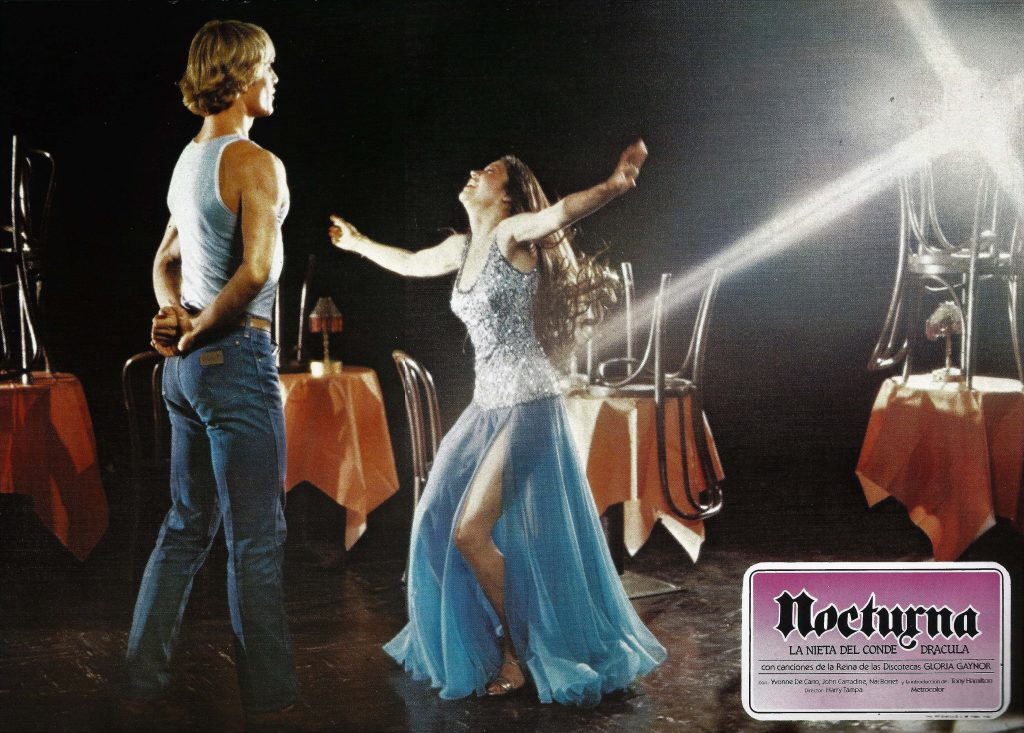
“Nocturna, Granddaughter of Dracula” was released in theatres in 1979 and was an immediate flop. Up against another vampire comedy/spoof, “Love at First Bite,” which incidentally had its own Disco sequence, few theatres even showed it and the critics, if they even bothered to review it, did not have favourable things to say. The film’s shortcomings were just far too unforgivable during its initial release. Meanwhile, the album was released simultaneously with the film, and it too did not become a top seller despite its strength. Perhaps it was the misleading cover, or maybe the fact that nobody saw the movie. Whatever the case, the soundtrack did not become the iconic dance album it deserved to be.
However, the singles released for the album faired a lot better than either the film or the soundtrack lp. Vickie Sue Robinson’s “Nighttime Fantasy” managed to reach the #21 spot on the Billboard Disco Club Charts, and Gloria Gaynor’s “Love Is Just a Heartbeat Away” managed to climb to the #81 position on the Billboard charts. Although nobody was buying the album or seeing the movie, the singles were strong sellers on their own, and both songs became part of the soundscape during the dying days of Disco.
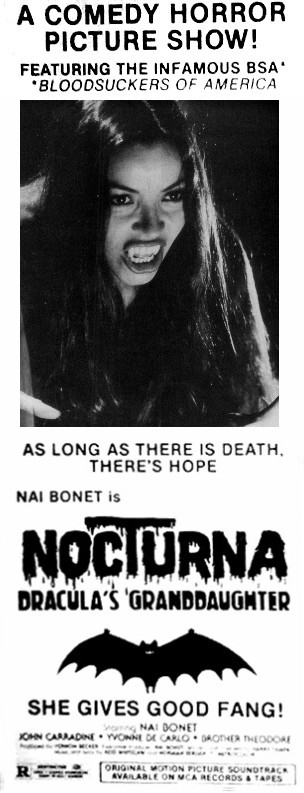
After it’s extremely short run in theatres, Nai Bonet hoped “Nocturna” might get a second life on television, but for a film to be eligible for broadcast on cable tv it had to be at least 100 minutes in length, and “Nocturna” fell short at only 85 minutes. During the early days of home video, “Nocturna” was released on video cassette, but made available only to rental shops via a video tape that cost over a hundred dollars. When few people were clamouring to rent the film, a cheaper version was never produced for the home video market. But during the DVD boom when many of the world’s most banal and mediocre films got a release, “Nocturna” still wasn’t released on the public market. Still barely finding any sort of an audience today, it doesn’t seem like it’ll be getting any sort of a release soon. Thankfully some unnamed hero has put the entire film for all of us to enjoy for free on YouTube. Now there is no excuse for us not to enjoy “Nocturna, Granddaughter of Dracula” together (Vinyl Story Note: If you scroll down to the bottom of the page, you can access “Nocturna, Granddaughter of Dracula” for yourself right here! You’re welcome!)
And I encourage you to watch it because, despite its failures, “Nocturna, Granddaughter of Dracula” is an irresistible oddity. The film is extremely stylish, with some incredible, albeit unpractical, fashions. While the comedy is generally awful, the outlandish bat transformation scenes are memorably off beat and delightfully ridiculous. Meanwhile, the film makes good use of location filming, including a fantastic sequence of Nocturna roaming the Manhattan streets at night, making it a time capsule of New York nightlife at the end of the 1970’s.
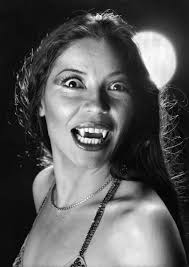
But most of all, I’ll admit that I just really like Nai Bonet a lot. Although she isn’t a capable actress, I find her captivating to watch. You can see the joy overtake her when she’s dancing, and the enthusiastic zeal she creates overflows to the performers around her, There is a lot of wide eyed excitement on the facers of the film’s extras, which could actually be caused by amphetamines, but I like to think that the only drug they are actually on is Nai Bonet
So, whatever became of Nai Bonet? Well, after the failure of “Nocturna,” Nai dusted herself off and produced and starred in a second picture – a “Godfather” inspired film called “Hoodlums” (1980). Unfortunately “Hoodlums” got even less attention, and after the film’s financer ended up dead from investing stolen mob money, Nai Bonet decided to get out of the film business for good. Nai Bonet quietly slipped out of sight, never to be seen again.
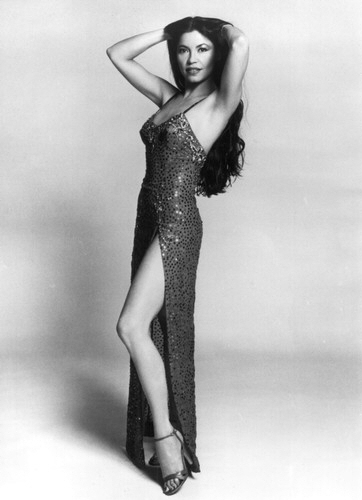
After watching both of Nai Bonet’s films, I feel that she was actually very gifted, but her focus was extremely misplaced. Making the movies star vehicles for herself was possibly her biggest mistake. While she could dance, no amount of coaching would make her a good actress. But Nai Bonet had a real knack at producing movies. Her films may not have been great, but they looked great. She obviously knew how to convince people to finance the films, and she could find talent to appear in them. Her movies aren’t cheap looking, and their production value proved to be several notches above the average independent film, giving them a polished and professional look. Meanwhile, her scripts may have lacked substance or plot, but they were rich in ideas. The concept of “Nocturna” is an inspired one, and perhaps if she had teamed up with a more experienced writer to help flesh out the idea together they could have come up with a far stronger story that would have offered a lot more to the audience. If Nai had put away the idea of on camera stardom and, instead, focused on a career behind the scenes, I wonder if she’d have had a far more successful career in film. It’s a “what if” that can never be answered. But, as is, with two films, albeit of questionable quality, to her name, Nai Bonet is still one of cult cinema’s first female film producers, which is a pretty impressive feat any way you look at it.
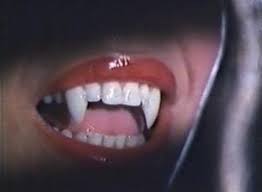
Nai Bonet seems to be elusive. Where she has been, or what she has been doing for the past 45 years seems to be a mystery. Wherever she is, I hope she looks back fondly on her movie career. I applaud her ambition and think that getting “Nocturna” from her notebook to the screen, whether it succeeded or not, was an incredible achievement. I truly hope that some day “Nocturna, Granddaughter of Dracula” will get the attention and respect that it deserves amongst cult film fans, and that, just maybe, Nai Bonet will reappear to warm accolades. Until then, I hope she is forever dancing. It really is the one thing she does best, and she has a fantastic soundtrack album all her own to dance to.



